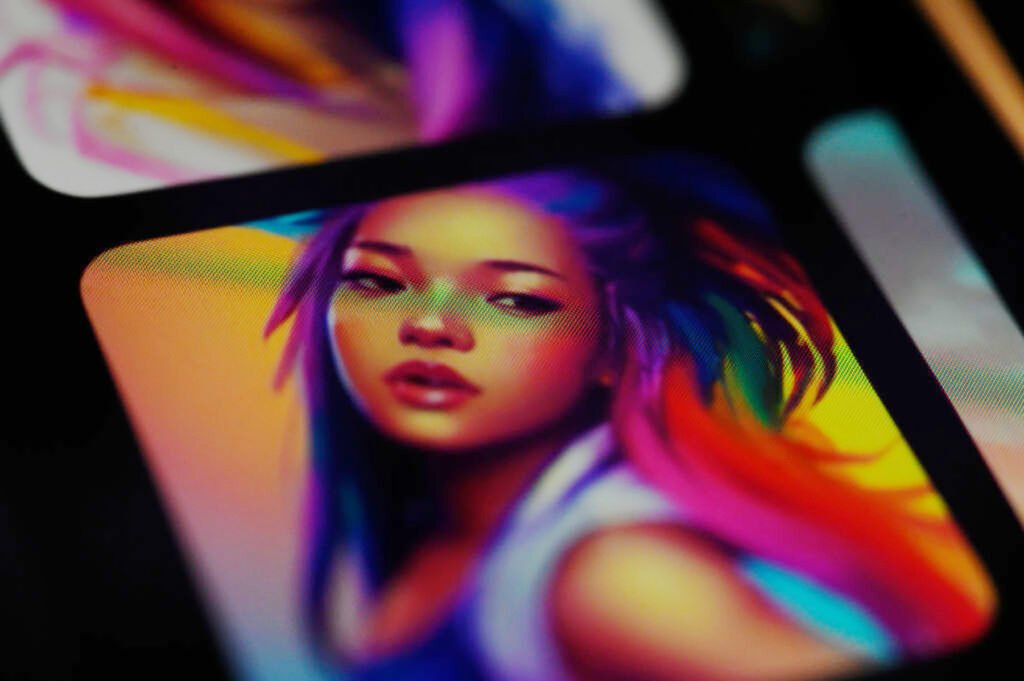In recent years, the usage of Artificial Intelligent tools has increased in commonality, from chatbots such as ChatGPT to Photoshop’s AI generative tool. Programs that generate AI art with user input have become increasingly popular. Tools like Midjourney have over 17.9 million users, with Stable Diffusion surpassing 10 million. Alongside these developments, AI-generated art has become more prominent on social media platforms. Although often used for recreational purposes, this method has also been used to generate profit. Due to the efficient lack of labor necessary for generation, many question the tool’s significance regarding the art industry and job safety.
Many independent and freelance artists in today’s job market rely on commissions as a primary source of income. Companies and individuals can request specific art from these freelancers for a fee. However, with the increased accessibility of AI tools, people can now obtain their own specified art without paying an artist. Alongside posing a threat to potential jobs for artists, an issue arises when considering the nature of AI-generated images. The tool collects images from the internet and mimics them to fulfill the user-specified prompt. This method has been scrutinized, as the original artists have not consented to the companies using their art to train AIs. In retaliation, in January 2023, artists Sarah Andersen, Kelly McKernan, and Karla Ortiz began a lawsuit against Stability AI and Midjourney, alleging that these organizations infringed the rights of many artists. Even so, no developments have been made to the case, as the copyright ruling has not been updated to accommodate the new AI art landscape.
On a corporate level, AI art has also appeared in animated shows. In the anime ‘Dog and Boy’ by Netflix Japan, the company utilized the tool to create background images. After receiving backlash from the public and artists within the workforce, Netflix Japan released a statement in defense. The Tweet stated that the tool compensated for the labor shortage and was an “experimental effort.” Similarly, in May of 2023, the company ‘Rayark’ of the video game ‘Cytus’ was accused of laying off artists in favor of AI-generated imagery when players began to notice strange aspects of the game’s newer art that corresponded with that of most AI-generated art (ex: six-fingered characters and unnatural clipping). After the accusations, the company denied laying off any artists in favor of AI tools. However, the company asserted that they hired more staff with “AI expertise” to anticipate the industry’s shift towards utilizing AI imagery. Despite the company’s denial of laying off artists, a significant discussion regarding the role of AI usage in the art industry has arisen.
As AI art becomes more common in the art industry, companies alongside individuals will be forced to make decisions regarding the tool’s usage. For now, copyright owners can claim infringement if the program accessed their works and created “substantially similar” outputs. With the increasing demand from artists for further protection of their creations, many hope for advancements in copyright legislation.
Works Cited
Ai Photo Editing with Photoshop – Adobe, www.adobe.com/products/photoshop/ai.html. Accessed 25 July 2023.
Bonifacic, Igor. “Netflix’s ‘Dog and Boy’ Anime Causes Outrage for Incorporating AI-Generated Art.” Engadget, 28 June 2023, www.engadget.com/netflixs-dog-and-boy-anime-short-causes-outrage-for-incorporating-ai-generated-backgrounds-203035524.html.
“Exploring the Effects of AI Art on Independent Artists.” By Students, for Students., 8 Feb. 2023, readthemike.com/exploring-the-effects-of-ai-art-on-independent-artists/.
Generative Artificial Intelligence and Copyright Law, crsreports.congress.gov/product/pdf/LSB/LSB10922. Accessed 25 July 2023.Plunkett, Luke. “Studio Denies Laying off Artists for AI after Fans Spot Character with Six Fingers.” Kotaku, 30 May 2023, kotaku.com/ai-art-layoff-video-game-studio-pc-midjourney-aigc-1850489333.
